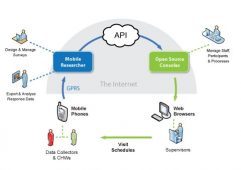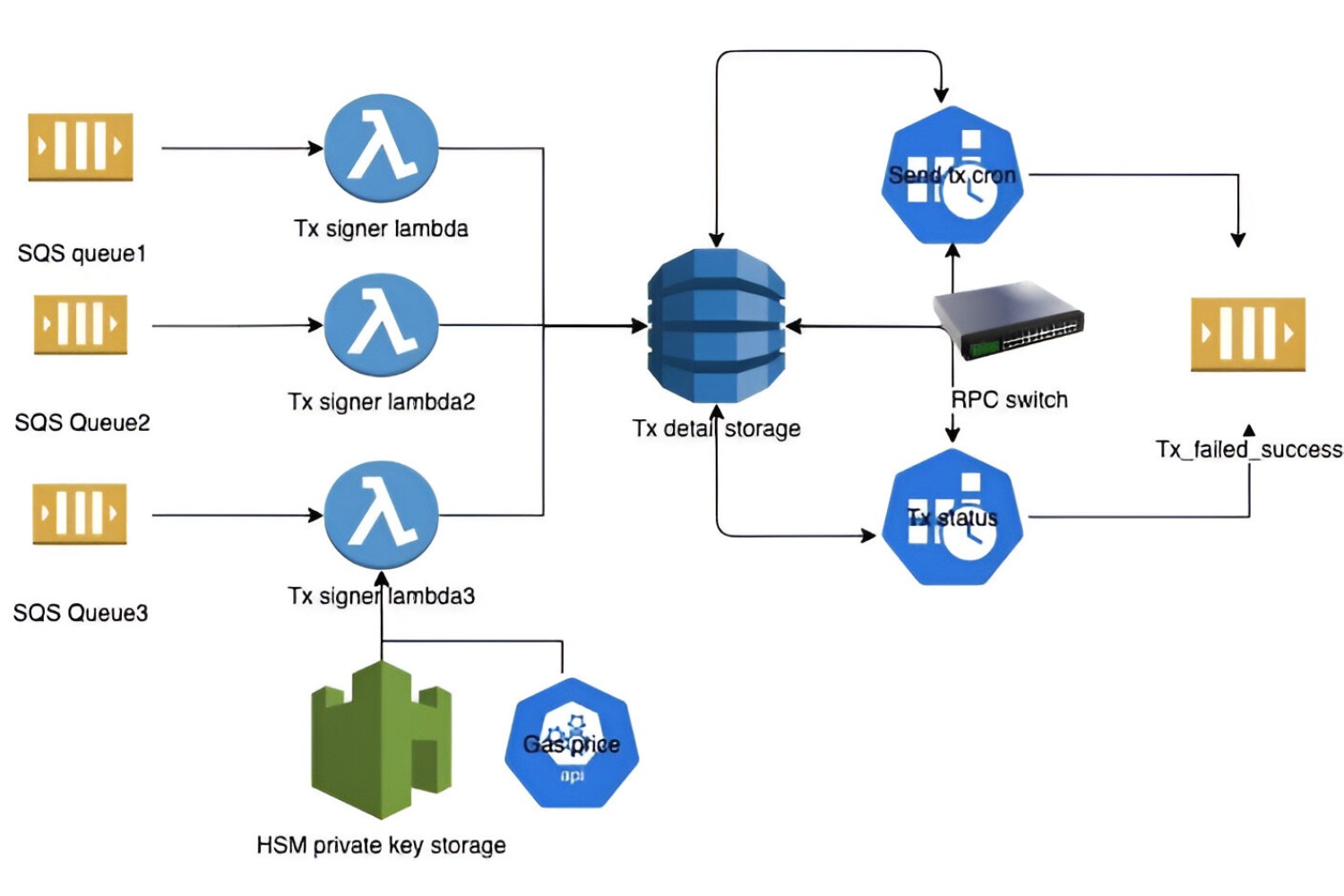Introduction
Welcome to the world of blockchain, a revolutionary technology that has been creating waves in various industries. In recent years, blockchain has gained significant attention and has become more than just a buzzword. This groundbreaking innovation has the potential to transform the way we transact, store and verify information.
But what exactly is blockchain and what is its purpose? In simple terms, blockchain is a decentralized digital ledger that records transactions across multiple computers. It provides a transparent and tamper-proof way to store and verify information, ensuring trust and security in a digital world.
Originally conceived for digital currencies like Bitcoin, blockchain technology has evolved to offer numerous applications beyond cryptocurrency. From supply chain management and healthcare to voting systems and real estate, blockchain has the potential to disrupt and revolutionize various sectors.
In this article, we will explore the purpose of blockchain, highlighting its key features and benefits. We will delve into its ability to enhance security and privacy, improve transparency and accountability, facilitate trust and peer-to-peer transactions, as well as reduce costs and intermediaries. Additionally, we will discuss the challenges and limitations that blockchain technology faces.
So, whether you’re a curious individual, an industry enthusiast, or a business owner looking to leverage blockchain, this article will provide you with a comprehensive understanding of the purpose and potential of this innovative technology.
What is Blockchain?
At its core, blockchain is a distributed and decentralized digital ledger that stores information across multiple computers or nodes. Unlike traditional centralized systems that rely on a single authority to validate and verify transactions, blockchain operates on the principle of consensus among participants in the network.
Every transaction or piece of data that is added to the blockchain is stored in a block. These blocks are linked together sequentially, forming a chain of blocks, hence the name “blockchain.” Each block contains a unique identifier called a cryptographic hash, which ensures the integrity of the data stored within the block.
One of the defining features of blockchain is that it is immutable, meaning that once information is recorded on the blockchain, it cannot be altered or deleted without the consensus of the network participants. This immutability, along with the decentralized nature of blockchain, makes it highly secure and resistant to hacking and fraud.
Blockchain technology relies on sophisticated cryptographic algorithms to ensure the confidentiality, integrity, and authenticity of data. Transactions on the blockchain are verified through a process known as mining, where powerful computers compete to solve complex mathematical puzzles. Once a puzzle is solved, the miner adds the block to the blockchain, and the transaction becomes a permanent part of the ledger.
In addition to its security benefits, blockchain offers transparency. The entire transaction history is open and accessible to all participants in the network. This transparency fosters trust and accountability, as anyone can verify the authenticity and validity of transactions.
It is important to note that while blockchain is often associated with cryptocurrencies like Bitcoin, it has evolved to be much more than that. Blockchain technology can be applied to a wide range of industries and use cases, such as supply chain management, healthcare recordkeeping, identity verification, smart contracts, and decentralized finance.
In the next section, we will explore how blockchain works and the key components that make it an innovative and transformative technology.
How does Blockchain work?
To understand how blockchain works, let’s break it down into its key components and processes.
1. Decentralization: Unlike traditional centralized systems, blockchain operates on a decentralized network of computers, known as nodes. Each node has a copy of the entire blockchain ledger, ensuring that no single authority has control over the data.
2. Transaction Verification: When a new transaction is initiated, it needs to be verified by the network participants. This verification process ensures that the transaction is valid and meets the predefined rules or conditions set by the blockchain protocol.
3. Consensus Mechanism: Consensus is a fundamental feature of blockchain that enables network participants to agree on the state of the blockchain. Different blockchain platforms use various consensus mechanisms, such as Proof of Work (PoW), Proof of Stake (PoS), or Delegated Proof of Stake (DPoS), to validate transactions and achieve consensus.
4. Block Creation: Once a transaction is verified, it is grouped with other validated transactions to form a new block. Each block contains a unique identifier called a cryptographic hash, which represents the data within the block.
5. Mining: In Proof of Work blockchain networks, miners compete to solve complex mathematical puzzles to validate and add new blocks to the blockchain. This process requires significant computational power and consumes energy. Miners are rewarded for their efforts with cryptocurrency tokens.
6. Chain of Blocks: Once a block is added to the blockchain, it becomes a permanent and unalterable part of the ledger. Each block contains a reference to the previous block, creating a chain of blocks that ensures the integrity and continuity of the entire transaction history.
7. Consensus Maintenance: As new transactions are added to the blockchain, network participants continuously maintain consensus on the validity and order of these transactions. This ongoing consensus ensures that all copies of the blockchain remain synchronized and consistent.
By leveraging cryptographic algorithms, distributed consensus, and decentralized network architecture, blockchain provides a secure and transparent system for recording and verifying transactions. This innovative technology has the potential to revolutionize various industries by enabling trust, transparency, and efficiency.
In the next section, we will explore the purpose and benefits of blockchain in more detail.
The Purpose of Blockchain
Blockchain serves a multitude of purposes that have the potential to transform industries and improve various aspects of our digital lives. Let’s delve into the key purposes and benefits of blockchain technology.
Enhancing Security and Privacy: Blockchain offers a high level of security due to its decentralized nature and cryptographic algorithms. The immutability of data stored on the blockchain ensures that once a transaction is recorded, it cannot be altered or tampered with. This makes blockchain a valuable tool for protecting sensitive information and combating fraud and cyber attacks.
Improving Transparency and Accountability: Transparency is a core principle of blockchain technology. By providing a decentralized and accessible ledger of transactions, blockchain enhances transparency and fosters trust among participants. Every transaction on the blockchain can be verified, ensuring accountability and reducing the need for intermediaries and third-party trust.
Facilitating Trust and Peer-to-Peer Transactions: Blockchain enables trust in peer-to-peer transactions without relying on intermediaries such as banks, governments, or central authorities. Through smart contracts and programmable transactions, blockchain can automate and enforce agreements, reducing the risk of fraud and enabling direct interactions between parties.
Reducing Costs and Intermediaries: Traditional processes often involve numerous intermediaries, resulting in added costs, delays, and complexities. Blockchain technology has the potential to streamline and simplify processes by removing the need for intermediaries, reducing costs, and increasing efficiency.
Disrupting Traditional Industries: The versatile nature of blockchain technology allows it to disrupt a wide range of industries. From supply chain management to healthcare, finance, and real estate, blockchain has the potential to revolutionize traditional systems and create new opportunities for innovation.
Enabling Decentralized Applications (DApps): Blockchain serves as the foundation for the development of decentralized applications, also known as DApps. These applications leverage the transparency, security, and trust of blockchain technology to create new methods of interaction, from decentralized finance platforms to voting systems and social networks.
Overall, the purpose of blockchain is to provide a secure, transparent, and efficient system for recording and verifying transactions. It aims to empower individuals, enhance trust, and revolutionize industries by eliminating inefficiencies and introducing new possibilities for collaboration and innovation.
In the next sections, we will explore the specific ways in which blockchain achieves these purposes, as well as the challenges and limitations it faces.
Enhancing Security and Privacy
One of the primary purposes of blockchain technology is to enhance security and privacy in digital transactions and data storage. Traditional systems often face challenges when it comes to protecting sensitive information, preventing data breaches, and ensuring the integrity of transactions. Blockchain addresses these concerns through its unique features.
Immutability: Blockchain offers immutability, meaning that once data is recorded on the blockchain, it cannot be altered or tampered with. Each transaction is stored in a block, which is linked to the previous block through a cryptographic hash. This makes it nearly impossible for malicious actors to modify or manipulate the data recorded on the blockchain without acquiring control of a majority of the network’s computational power.
Decentralization: The decentralized nature of blockchain is a key factor in enhancing security and privacy. In traditional centralized systems, data is stored in a single location, making it vulnerable to attacks. In contrast, blockchain distributes data across multiple nodes or computers, ensuring that no single point of failure exists. If one node is compromised, the other nodes in the network maintain the integrity of the data.
Encryption: Blockchain employs advanced encryption techniques to secure data and transactions. Each transaction is encrypted with a user’s public key, making it accessible only to the intended recipient who holds the corresponding private key. Encryption ensures that sensitive information remains confidential and protected against unauthorized access.
Consensus Mechanisms: Blockchain relies on consensus mechanisms to validate and verify transactions. The most well-known consensus mechanism, Proof of Work (PoW), requires miners to solve complex mathematical puzzles to add a new block to the blockchain. This process ensures that only legitimate transactions are added to the blockchain, enhancing the security and integrity of the system.
Data Auditing: Blockchain’s transparent nature allows for easy auditing of transactions. With transaction details recorded on the blockchain, it becomes possible to trace the origin and movement of assets or information. This helps in preventing fraud and identifying any unauthorized activities, contributing to stronger security measures.
Enhancing security and privacy through blockchain technology benefits various industries. For instance, in healthcare, blockchain can securely store and share patient records, ensuring privacy and integrity. In financial services, blockchain offers secure and transparent peer-to-peer transactions, reducing the risk of fraud and unauthorized access.
While blockchain technology provides robust security measures, it is essential to consider potential vulnerabilities and risks. These include external attacks, consensus manipulation, and smart contract flaws. Ongoing research and continuous improvement are necessary to address these challenges and strengthen the security and privacy features of blockchain technology.
In the subsequent sections, we will explore how blockchain improves transparency and accountability and facilitates trust and peer-to-peer transactions.
Improving Transparency and Accountability
Blockchain technology is renowned for its ability to improve transparency and accountability in various sectors. Traditional systems often lack transparency, making it challenging to verify the authenticity and integrity of transactions. Blockchain addresses these issues by providing a decentralized and transparent ledger that enables participants to trace and verify every transaction.
Decentralized Ledger: The decentralized nature of blockchain ensures that every participant in the network has access to a copy of the blockchain ledger. This transparency enables all network participants to independently verify and validate transactions, eliminating the need for trust in a single authority.
Immutable Records: Once a transaction is recorded on the blockchain, it becomes an immutable part of the ledger. Transactions cannot be altered, deleted, or tampered with without the consensus of the network. This immutability ensures that the integrity of transaction records is preserved, providing an auditable history of transactions.
Public Auditability: Blockchain’s transparent nature allows for public auditability of transactions. Anyone with access to the blockchain can review and track the flow of assets or information. This enhanced transparency provides a high level of accountability and decreases the possibility of fraudulent activities.
Smart Contracts: Blockchain technology enables the use of smart contracts, which are self-executing agreements coded on the blockchain. Smart contracts automatically enforce predefined conditions and execute transactions when those conditions are met. The transparency and immutability of smart contracts ensure that all parties involved can verify the execution and fulfillment of contractual obligations.
Anti-Corruption Measures: By recording transactions on a transparent and immutable ledger, blockchain technology acts as an anti-corruption tool. It reduces the opportunity for fraudulent activities and embezzlements, as all transactions are publicly auditable and traceable. This transparency fosters a higher level of accountability among participants.
Blockchain’s ability to improve transparency and accountability has significant implications across industries. In supply chain management, blockchain can track the movement of goods at every stage, allowing stakeholders to verify the authenticity, origin, and conditions of products. In governance, blockchain can enhance the transparency of voting systems, ensuring the integrity of elections and reducing the possibility of fraud.
While blockchain technology enhances transparency, it is important to note that not all blockchains are entirely transparent. Some blockchain platforms offer privacy features that allow for confidential transactions while still maintaining the integrity and immutability of the ledger.
In the subsequent sections, we will explore how blockchain facilitates trust and peer-to-peer transactions, as well as its potential to reduce costs and intermediaries.
Facilitating Trust and Peer-to-Peer Transactions
One of the core purposes of blockchain technology is to facilitate trust and enable peer-to-peer transactions without the need for intermediaries. Traditional transactions often require a central authority, such as a bank or government, to facilitate trust between parties. Blockchain eliminates the need for these intermediaries by providing a decentralized and secure platform for direct peer-to-peer interactions.
Eliminating Third-Party Trust: With blockchain, trust is no longer reliant on a single entity. Instead, it is distributed across the network of participants who collectively validate and verify transactions. The decentralized nature of blockchain ensures that no single participant has control over the data, reducing the need to place trust in a central authority.
Transparent and Verifiable Transactions: Blockchain technology provides transparency and verifiability of transactions. Every transaction recorded on the blockchain is visible to all participants, and once added, it cannot be altered or tampered with without the consensus of the network. This transparency enables participants to independently verify the authenticity and integrity of transactions, fostering trust among peers.
Smart Contracts: Blockchain-based smart contracts automate and enforce terms and conditions of agreements. These self-executing contracts eliminate the need for intermediaries to ensure trust. Smart contracts are coded into the blockchain and automatically execute transactions when the predefined conditions are met. This enables parties to interact directly, saving time, reducing costs, and enhancing trust.
Cryptographic Security: Blockchain relies on cryptographic algorithms to ensure the security and integrity of transactions. Encryption techniques ensure that only the intended recipient can access the transaction details. Digital signatures and public-key cryptography provide authentication and verification, further enhancing trust in peer-to-peer transactions.
Decentralized Finance (DeFi): Blockchain technology has paved the way for decentralized finance (DeFi) applications. DeFi allows individuals to engage in financial activities such as lending, borrowing, and trading directly with each other, without relying on traditional financial intermediaries. By leveraging blockchain’s trust and transparency, DeFi offers an alternative, permissionless, and inclusive financial ecosystem.
Blockchain’s ability to facilitate trust and peer-to-peer transactions has implications across various sectors. In remittances and cross-border transactions, blockchain reduces dependency on traditional intermediaries, making transactions faster and more cost-effective. In the sharing economy, blockchain enables direct interactions between service providers and consumers, removing the need for centralized platforms.
However, while blockchain promotes trust, it is essential to recognize the challenges faced, such as regulatory compliance, scalability, and user adoption. Addressing these challenges will be crucial in maximizing the potential of blockchain technology and its ability to facilitate trust and peer-to-peer transactions.
In the subsequent sections, we will explore how blockchain reduces costs and intermediaries, as well as its potential to disrupt traditional industries.
Reducing Costs and Intermediaries
Blockchain technology has the potential to revolutionize industries by reducing costs and eliminating the need for intermediaries. Traditional systems often involve multiple middlemen, resulting in increased costs, delays, and inefficiencies. Blockchain addresses these challenges by providing a decentralized and efficient platform for conducting transactions.
Removal of Intermediaries: Blockchain enables direct peer-to-peer interactions, eliminating the need for intermediaries such as banks, brokers, or escrow agents. By removing these middlemen, blockchain reduces transaction costs and streamlines processes, resulting in faster and more cost-effective transactions.
Efficient Processes: Blockchain streamlines processes by automating them through smart contracts. Smart contracts automatically execute predefined conditions and eliminate the manual involvement of intermediaries. This automation reduces human error, accelerates transaction processing, and reduces administrative costs.
Faster Settlements: With traditional systems, settlements can take days or even weeks to complete. Blockchain technology accelerates settlements by providing real-time transaction processing. By removing the need for intermediaries to verify and process transactions, blockchain enables near-instantaneous settlements, allowing participants to access funds and assets more quickly.
Reduced Transaction Costs: Traditional financial transactions often come with high fees associated with intermediaries and cross-border transfers. Blockchain eliminates or significantly reduces these costs by enabling direct peer-to-peer transactions without intermediaries. Additionally, utilizing blockchain-based cryptocurrencies for transactions can further reduce fees associated with traditional fiat currencies.
Supply Chain Efficiency: Blockchain improves efficiency in supply chain management by providing transparency, traceability, and authentication of goods and transactions. This reduces the need for intermediaries and manual paperwork, leading to enhanced supply chain efficiency, cost savings, and improved trust among stakeholders.
Access to Global Markets: Blockchain technology enables access to global markets for individuals and businesses, regardless of geographic location or traditional banking infrastructure. By eliminating barriers and reducing cross-border transaction costs, blockchain opens up opportunities for financial inclusion and expands market reach.
Overall, blockchain’s ability to reduce costs and intermediaries has the potential to disrupt various industries. It promotes efficiency, transparency, and trust while unlocking new business models and opportunities. However, it is essential to address scalability and regulatory challenges to fully realize the cost-saving benefits of blockchain technology.
In the subsequent sections, we will explore how blockchain disrupts traditional industries and the challenges and limitations it faces in its widespread adoption.
Disrupting Traditional Industries
Blockchain technology has the potential to disrupt and transform traditional industries across the board. Its decentralized, transparent, and secure nature enables innovative and efficient solutions to longstanding challenges. Let’s explore some of the industries that are being disrupted by blockchain.
Finance and Banking: Blockchain technology is poised to revolutionize the finance and banking sector. It enables faster and more secure cross-border transactions, eliminates the need for intermediaries in remittance services, and provides accessible and decentralized financial services through decentralized finance (DeFi) platforms. Blockchain-based cryptocurrencies like Bitcoin and Ethereum offer an alternative to traditional banking systems and have the potential to reshape the global financial landscape.
Supply Chain Management: The supply chain industry is laden with inefficiencies, lack of transparency, and counterfeiting problems. Blockchain can provide end-to-end visibility and traceability, allowing for greater accountability and authenticity in the movement of goods. By utilizing smart contracts and decentralized ledgers, blockchain improves supply chain efficiency by reducing paperwork, eliminating manual reconciliation, and enhancing trust among stakeholders.
Healthcare and Pharmaceuticals: Blockchain offers solutions to various challenges in the healthcare sector. It can securely store patient medical records, ensuring data privacy and interoperability among healthcare providers. Blockchain can also help combat counterfeit drugs by tracking the entire pharmaceutical supply chain, preventing the distribution of fake medications and ensuring patient safety.
Real Estate: Real estate transactions involve multiple intermediaries, lengthy paperwork, and high costs. Blockchain can simplify the process by enabling digital property ownership verification, transparent property listings, and secure and efficient property transfers. Smart contracts facilitate automated property transactions, reducing the need for intermediaries and increasing transaction speed and transparency.
Energy Sector: The energy sector is undergoing a significant transformation with the integration of blockchain technology. Blockchain-enabled energy trading platforms allow for peer-to-peer energy exchanges, optimizing energy consumption and reducing costs. Additionally, blockchain facilitates transparent tracking of renewable energy generation, ensuring the authenticity and credibility of renewable energy certificates.
Intellectual Property: The protection of intellectual property is a critical challenge in the digital age. Blockchain provides a decentralized and tamper-proof ledger for recording and verifying ownership rights and transactions. By leveraging blockchain’s immutability and transparency, creators can establish a credible proof of existence, ownership, and authorship, simplifying copyright registration and combating intellectual property infringement.
These are just a few examples of industries being disrupted by blockchain technology. The decentralized and secure nature of blockchain offers countless opportunities for innovation across sectors, from voting systems, gaming, and charity to ride-sharing, music streaming, and beyond.
While blockchain has immense potential, its widespread adoption faces challenges such as regulatory barriers, scalability, energy consumption, and interoperability. Overcoming these challenges will be crucial to unlocking the full disruptive potential of blockchain in traditional industries.
In the subsequent sections, we will explore the challenges and limitations faced by blockchain technology and provide an overview of the current landscape.
Challenges and Limitations of Blockchain Technology
While blockchain technology offers numerous benefits and disruptive potential, it also faces several challenges and limitations that need to be addressed for widespread adoption. Let’s explore some of the key challenges associated with blockchain.
Scalability: One of the primary challenges faced by blockchain is scalability. As transactions increase and more participants join the network, blockchains must handle a larger volume of data and process transactions quickly. Scaling solutions such as sharding, layer-two protocols, and off-chain transactions are being developed to address this issue.
Energy Consumption: Blockchain networks that rely on Proof of Work (PoW) consensus algorithms consume significant amounts of computational power and energy, leading to concerns about their environmental impact. Transitioning to more energy-efficient consensus mechanisms, such as Proof of Stake (PoS), is being explored to tackle this challenge.
Regulatory and Legal Frameworks: Blockchain technology operates across global jurisdictions, and its decentralized nature poses challenges for regulatory and legal frameworks. Governments and international bodies are working towards establishing regulations and standards that balance innovation while addressing concerns around security, privacy, identity verification, and AML/KYC compliance.
Interoperability: Achieving interoperability between different blockchain networks, protocols, and systems is a complex challenge. Improving interoperability would enable seamless data and asset exchange between different blockchains and traditional systems, promoting collaboration and scalability.
User Adoption: Blockchain technology is still relatively new and complex for the average user. Educating users and creating user-friendly interfaces and applications are crucial for widespread adoption. Overcoming the usability barriers and creating intuitive experiences will increase user confidence and enable broader participation in the blockchain ecosystem.
Privacy Concerns: While blockchain provides transparency, privacy concerns arise when dealing with sensitive data. Striking a balance between transparency and privacy is crucial, especially in industries like healthcare and finance. Privacy-enhancing technologies, such as zero-knowledge proofs, are being developed to address these concerns.
Consensus Mechanisms: Different consensus mechanisms have varying levels of security, scalability, and decentralization. Continual research and development are needed to optimize consensus mechanisms and ensure network security, while also considering performance and efficiency requirements.
Legacy System Integration: Transitioning from traditional systems to blockchain-based solutions can be challenging, especially when integrating with existing legacy systems. Compatibility issues, data migration, and legacy system constraints require careful planning and implementation to ensure smooth and seamless integration.
These challenges and limitations highlight the evolving nature of blockchain technology. Researchers, developers, businesses, and regulatory bodies must work collaboratively to address these challenges, find innovative solutions, and unlock blockchain’s full potential.
In the subsequent sections, we will provide an overview of the current landscape of blockchain technology and its future prospects.
Conclusion
Blockchain technology has emerged as a game-changer in various industries, offering immense potential to revolutionize the way we transact, store data, and build trust. Its decentralized and transparent nature enables secure, tamper-proof, and efficient peer-to-peer transactions without the need for intermediaries.
Throughout this article, we have explored the purpose and benefits of blockchain technology. We have seen how it enhances security and privacy, improves transparency and accountability, facilitates trust and peer-to-peer transactions, and reduces costs and intermediaries. Blockchain’s disruptive potential extends to industries such as finance, supply chain management, healthcare, real estate, and many more.
However, blockchain technology is not without its challenges and limitations. Scalability, energy consumption, regulatory frameworks, interoperability, user adoption, and privacy concerns pose obstacles that need to be overcome through continued research, development, collaboration, and regulatory frameworks.
Despite these challenges, the blockchain landscape continues to evolve, with advancements in consensus mechanisms, privacy-enhancing technologies, interoperability solutions, and user-friendly interfaces. Innovative use cases and applications continue to emerge, with increasing industry adoption and investment in blockchain technology.
As blockchain technology matures and overcomes its limitations, it has the potential to reshape industries, enhance efficiency, and foster new business models and opportunities. The journey to widespread adoption of blockchain will require a concerted effort from technology developers, businesses, governments, and end-users alike.
It is an exciting time for blockchain technology, and its impact on society and the global economy will undoubtedly be profound. By leveraging blockchain’s potential, we can create a more transparent, secure, and inclusive digital future for individuals, businesses, and communities worldwide.

























